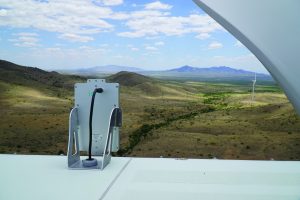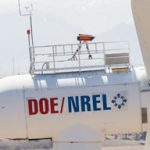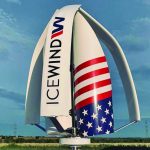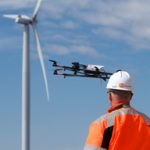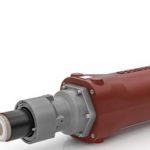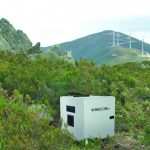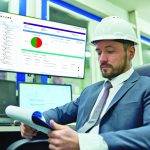Improving wind-turbine reliability to 99.5 percent will require new data analysis approaches across the industry because existing techniques keep the sector from going above current reliability levels, according to Carsten Westergaard, senior adviser of Wind and Water at the Sandia National Laboratories and professor of Practice at Texas Tech University.
“We’re no longer talking about the 50- or 60-percent reliability of the ’80s,” Westergaard said. “Today, a good turbine is probably 98 percent. We want to go to 99.5 percent. And you can’t just do that with a logistics mindset alone.”
Limitations
Sandia has been tracking multiple wind-farm supervisory control and data acquisition (SCADA) streams since 2007 through its Continuous Reliability Enhancement Wind (CREW) project, but it has reached the limits of how this data can help in understanding reliability.
Gauging wind-turbine reliability from various data sources is highly complex because the boundary conditions for the data are often undocumented and significantly affect the outcome of aggregation, according to Westergaard.
At the same time, most of the financial models the industry is using are limited in how they enhance reliability since they tend to focus on the cost of faults rather than on what technically causes failure.
Finally, Westergaard said benchmark averages drawn from current data sets might fail to account for the impact of discrete events such as lightning strikes.
Lightning typically causes multiple small fractures, Westergaard said. The industry has become adept at spotting and repairing those, often within a week or two. It used to take more than 12 months.
However, being able to repair the damage does not mean asset owners are closer to understanding why it happens in the first place.
“Out of a thousand turbines, you may have three major lightning-strike damage incidents a year, on a fleet of, say, seven different types of turbine,” Westergaard said. “That’s not enough to get clever on. It’s an area where shared knowledge would really be good.”
To date, he said the wind industry has not been good at sharing data. This means current reliability benchmarks may be inaccurate.
In the case of lightning, for example, benchmarks are based on experience gained in coastal Northern Europe, which has an average of 15 days of lightning a year, compared with California with almost zero and Texas with about 75.
New Analytics
To overcome these limitations, Sandia is working to make it easier to aggregate wind industry data so more complex analytics can be applied to gain a greater technical understanding of reliability.
As a first step, Sandia is developing a common data-tagging framework that can be used to integrate different future and past data sets.
Westergaard said the framework could be incorporated into an audit process to ensure it is used across the industry. This could help asset owners gain a greater understanding of the causes of failure and ultimately lead to a 1.5-percent reduction in faults, he said.
Researchers also hope to uncover fault patterns that cannot be predicted on a single-turbine basis.
One of the surprising findings in the Sandia data is that identical turbines can have different performance and reliability profiles even on the same wind farm, Westergaard said.
This could be due to the way each turbine interacts with others and with other elements in the environment. However, this variability is not fully captured in current reliability and performance models and financial comparisons.
“We’re so used to thinking of a turbine as a turbine, but we’re not really thinking of it as an element that is interacting with other elements,” Westergaard said. “Looking at the data, it was mind-blowing in its diversity.”
Moreover, according to Scott Abramson, director of operational excellence at Duke Energy Renewables, breaking down the information or data about wind turbines by specific technology allows owner-operators to analyze and compare data more accurately since there is a large disparity in operation and downtime between technologies.
The Sandia initiative to standardize, integrate, analyze, and understand reliability data is still in its early stages, and the development of a proof-of-concept system will depend on further funding.
If this is forthcoming, Westergaard said the proof of concept could start yielding results within a year and a half.




















